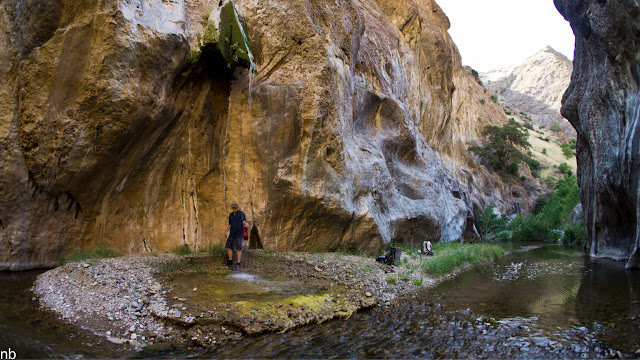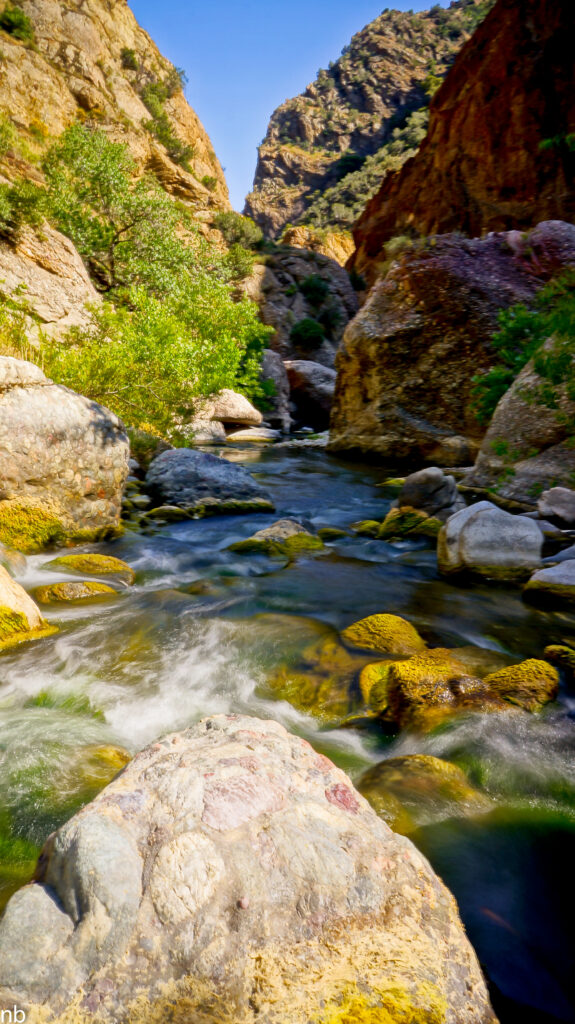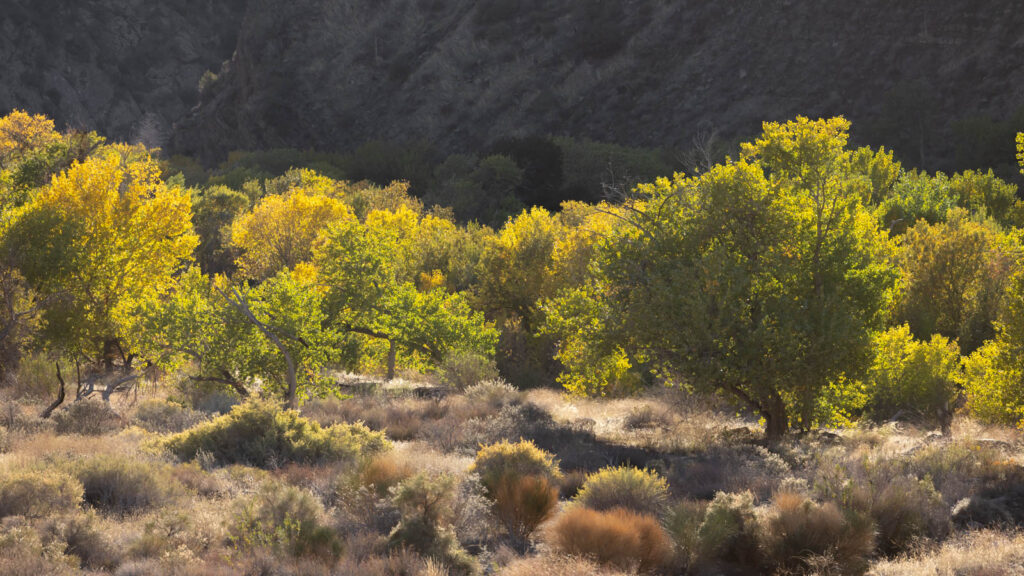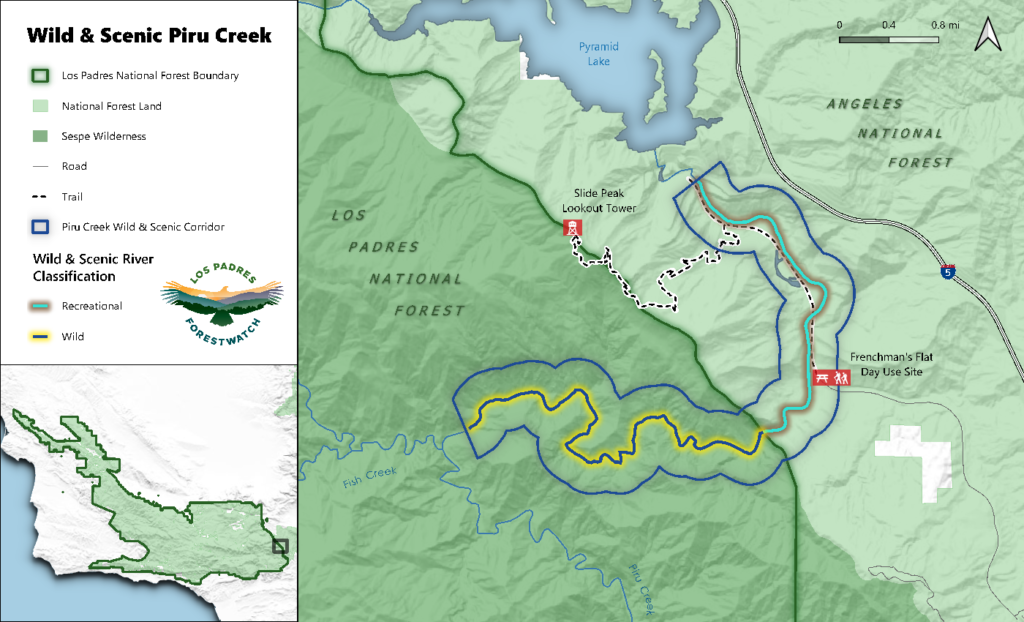Piru, Calif. – Nearly 15 years after Congress designated a seven-mile stretch of Piru Creek as a Wild and Scenic River, the Forest Service has finally completed a draft plan that will determine how the protected stream corridor will be managed over the long term.
The plan—called a Comprehensive River Management Plan (CRMP)—covers two adjacent segments of Piru Creek from Pyramid Reservoir downstream through the Sespe Wilderness to the Ventura-Los Angeles county line, as well as a ¼-mile buffer zone along both sides of the creek. The upper three-mile segment just downstream of Pyramid Lake was designated as “Recreational” by Congress while the lower 4.25-mile segment is designated as “Wild.” The creek segment is known for popular recreation areas like Frenchman’s Flat, where families from urban and nearby communities can experience nature and enjoy picnics and waterplay. The creek provides opportunities for catch-and-release trout fishing, swimming, rugged hiking and canyoneering, and whitewater rafting.
The National Wild and Scenic Rivers System was established by Congress in 1968 to serve as our nation’s strongest form of protection for free-flowing rivers and streams and now consists of more than 13,000 miles of waterways across the U.S. Once a river is added to the system, it triggers a three-year requirement to prepare a “comprehensive management plan” for the river. The plan must be developed with input from the public and must describe the river’s “outstandingly remarkable values” (ORVs)—those things that make the river unique and worthy of protection, and that should be safeguarded in perpetuity.
In their draft CRMP, the Forest Service found that both segments have fisheries and geology values, while the “Wild” segment also has scenery values. Piru Creek downstream of Pyramid Lake is an especially good place to see tilted layers of marine fossil-laden and terrestrial sedimentary rocks that formed 11 to 5 million years ago. And resident rainbow trout that are genetically 99.9% identical to ocean-migrating Southern California steelhead can be found along both Wild and Scenic River segments of Piru Creek.

These values assessment findings are similar to those from a 24-page draft values assessment that the Forest Service released in 2022 as a first step toward creating the draft CRMP. The agency appears to maintain that neither segment has outstandingly remarkable recreation, botany, wildlife, or historic and cultural values, despite a 2022 letter from ForestWatch, Center for Biological Diversity, CalWild, American Whitewater, Sierra Club, Fisheries Resource Volunteer Corps, and Community Hiking Club that urged the Forest Service to recognize all values of Piru Creek. However, the Forest Service did acknowledge that the Wild segment has outstandingly remarkable scenery values and that the fisheries ORV is present along the Recreational segment in the latest version of the values assessment.
A Long Delay
The Forest Service started evaluating Piru Creek’s eligibility for “wild and scenic” designation in the 1980s, but concluded in 1988 that it was not suitable for special protection. Several conservation groups formally challenged that determination by filing an appeal, prompting the Forest Service to revisit the matter.

The agency eventually found that this segment was suitable for “wild and scenic” protection but omitted this determination in a draft management plan for the forest in 2004, once again denying protections for Piru Creek. Conservation groups have criticized the Forest Service’s chronic reluctance and considerable internal ambivalence to recognize all the ways this creek segment is worthy of protection.
Congress ultimately stepped in, formally designating this seven-mile segment of Piru Creek as “wild and scenic” and triggering a three-year time frame for completing a management plan for the creek. Yet those three years came and went without any action. As a result, the Center for Biological Diversity filed a lawsuit in 2018, seeking a court order to compel the agency to begin the planning process.
It wasn’t the first time Los Padres National Forest officials landed in court for failing to prepare a mandated management plan for a “wild and scenic” river. In 1992, Congress protected three other waterways—Sespe, Sisquoc, and Big Sur—but took eleven years to complete those plans and only after those delays were challenged in court.
A similar pattern emerged with the most recent seven-mile Piru Creek segment, and following the Center’s 2018 lawsuit, the Forest Service agreed to complete the Piru Creek CRMP by the end of 2024.
New Threats, New Opportunities
As the Piru Creek plan is being finalized, Congress is also considering extending Wild and Scenic River protections to the remainder of Piru Creek upstream of this seven-mile segment. That legislation—the Central Coast Heritage Protection Act—has passed the House and is awaiting action in the Senate. The bill, and the protection it would bring, became more urgent after the Forest Service this summer proposed to remove trees and clear vegetation along a 20-mile stretch of Piru Creek, extending thousands of feet away from the river banks in some places.
Piru Creek remains one of the crown jewels of our region, but its fate remains uncertain. ForestWatch and our allies will continue to push for recognition of additional ORVs along the existing Wild and Scenic Piru Creek, a strong final CRMP, a stop to logging and vegetation clearing within the Piru Creek watershed, and the extension of Wild and Scenic River designation for the upper portion of the creek.









Comments are closed.